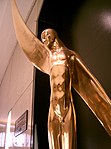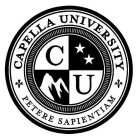Walkin' Dog

Walkin' Dog was an American hot dog stand located in Minneapolis, Minnesota. Owned by Dave Magnuson, the restaurant had been located inside the first floor food court of the Northstar Center office complex from 1991 to 2023, though it relocated to a different retail space within the same building in 2021. The restaurant's menu consisted of mostly hot dogs, made with Vienna sausage and including Chicago-style, in addition to nachos, pretzels, and ice cream. It was frequently cited by local publications as one of the most affordable dining options in the Minneapolis Skyway System. Following the effects of the COVID-19 pandemic and nearby George Floyd protests, the restaurant experienced a significant loss in customers beginning in 2020, and as a result of Northstar Center's renovation project, Walkin' Dog closed on April 21, 2023. The following year, Magnuson announced the restaurant would reopen following the completion of renovations.
Excerpt from the Wikipedia article Walkin' Dog (License: CC BY-SA 3.0, Authors, Images).Walkin' Dog
2nd Avenue South, Minneapolis
Geographical coordinates (GPS) Address Nearby Places Show on map
Geographical coordinates (GPS)
| Latitude | Longitude |
|---|---|
| N 44.9766 ° | E -93.2695 ° |
Address
Northstar East
2nd Avenue South 608
55402 Minneapolis
Minnesota, United States
Open on Google Maps









